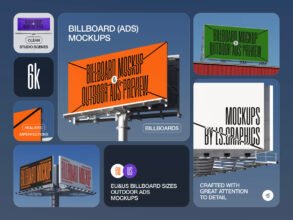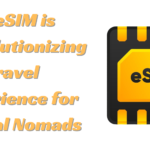Reaching Your Target Audience: Maximizing ROI with Paid Online Campaigns
Online marketing campaigns have become integral for businesses seeking to reach their target audience and maximize ROI. Paid online campaigns, ranging from social media advertising to search engine marketing, offer precise audience targeting and trackable results.
A well-structured campaign can drive high engagement, increase brand visibility, and generate leads or sales. However, crafting a successful campaign requires an understanding of different campaign types, audience behaviors, and evolving digital trends.
Understanding Your Target Audience
The first step to a successful campaign is understanding who your target audience is. Both demographic and psychographic profiling are crucial.
Demographics refer to measurable statistics like age, gender, income level, and location. For instance, if you are setting up a PPC campaign for a real estate website, understanding these demographics can help define whether your potential customers are first-time homebuyers, luxury property investors, or perhaps retirees looking to downsize.
Psychographics encompass aspects such as interests, behaviors, and attitudes. This could involve recognizing if your target audience in a real estate PPC campaign values urban or suburban living, sustainable housing, or proximity to amenities like schools or parks.
There are various tools and strategies that can aid in audience identification, such as online surveys, social media analytics, and market research. Understanding your audience helps in crafting personalized messages that resonate with potential customers and ultimately lead to higher conversion rates.
Different Types of Paid Online Campaigns
Paid online campaigns are a diverse and powerful set of tools that businesses can use to reach their target audience. By understanding the various types of paid campaigns, marketers can strategically implement them to drive engagement and conversions.
Social Media Advertising:
This strategy uses platforms like Facebook, Instagram, LinkedIn, and Twitter to connect with audiences. These platforms offer extensive targeting options, including location, demographics, interests, and behaviors, enabling businesses to reach a large and engaged audience with personalized content.
Search Engine Marketing (SEM):
SEM, which includes tools such as Google Ads or Bing Ads, allows advertisers to appear in search results for specific keywords. This strategy is particularly effective as it targets users who are actively seeking related products or services, leading to higher chances of conversion.
Display Advertising:
Display advertising encompasses various forms of visual ads, including banner ads, rich media, and video ads. These can be strategically placed on various websites, allowing businesses to capture the attention of potential customers and drive traffic back to their own site.
Influencer Marketing:
An emerging type of paid campaign is influencer marketing. Here, businesses collaborate with influencers who have significant online followings. This leverages the influencers’ established trust and rapport with their audience to boost brand visibility and credibility.
The array of paid online campaigns provides businesses with numerous opportunities to engage with their target audience in the digital space. The choice of campaign type can be guided by the audience’s online behavior and the objectives of the marketing strategy.
Designing Effective Paid Campaigns
Creating an effective campaign involves multiple elements. The right campaign type should be chosen based on the preferences of your target audience. Ad copies and visuals need to be compelling and aligned with your brand’s voice and message.
A/B testing, where two or more versions of an ad are run simultaneously to see which performs better, is a key strategy for enhancing campaign effectiveness. Tracking campaign performance and making necessary adjustments is also essential for achieving the desired results.
Maximizing ROI of Paid Campaigns
Maximizing the ROI of paid online campaigns is key to making the most of your marketing budget. It involves strategic planning, execution, and continuous monitoring.
The following tips can help you maximize your ROI:
- Define Your KPIs: Identify key performance indicators (KPIs) such as Click-Through Rate (CTR), Cost Per Click (CPC), and Conversion Rate. These provide measurable outcomes against which the success of the campaign can be gauged.
- Target Effectively: Use the targeting tools available on ad platforms to reach your desired audience. Correct targeting based on demographics, interests, and online behavior can increase engagement and conversions.
- Optimize Ad Creatives: Develop compelling ad copies and visuals that resonate with your audience. The more engaging your ad, the higher the chances of achieving desired actions.
- A/B Testing: Implement A/B testing to identify the most effective ad versions. This can inform decisions about which ads to run.
- Leverage Data Analytics: Regular analysis of your campaign performance allows for necessary adjustments. Data insights can help optimize the campaign and improve ROI.
Following these steps, businesses can effectively maximize their ROI, making paid online campaigns a successful part of their marketing strategy.
The Future of Paid Online Campaigns
The future of paid online campaigns is being shaped by technological advancements and changing consumer behavior. There are two major trends to watch out for.
Firstly, the increasing use of artificial intelligence (AI) and machine learning (ML) is expected to revolutionize campaign optimization. These technologies can analyze vast amounts of data quickly and provide insights into the most effective strategies.
They can also automate tasks such as ad placement, targeting, and bid management, saving time and resources.
Secondly, privacy regulations are expected to become more stringent, reshaping how businesses collect and use data. Consumers are becoming more conscious of their digital privacy, and regulations like the General Data Protection Regulation (GDPR) reflect this.
Marketers will need to balance personalization and privacy, possibly relying more on first-party data and less on third-party cookies.
The rise of influencer marketing, voice search, and video content is likely to continue shaping the future of paid campaigns. Brands will need to adapt their strategies to these emerging trends to stay relevant.
The future of paid online campaigns is both exciting and challenging. Staying informed about the latest trends and being adaptable will be key to leveraging these campaigns effectively.
Conclusion
Understanding your audience and leveraging the power of different types of paid online campaigns can significantly enhance the ROI of your marketing efforts. With the continuous evolution of digital advertising, businesses need to stay up-to-date and leverage new trends and technologies to reach their audience effectively.


















